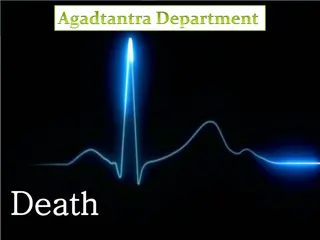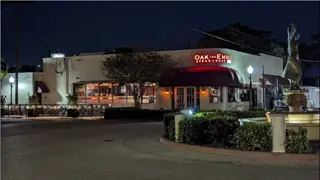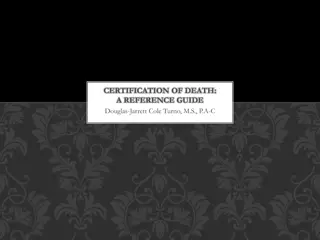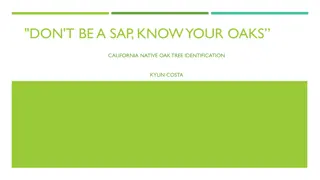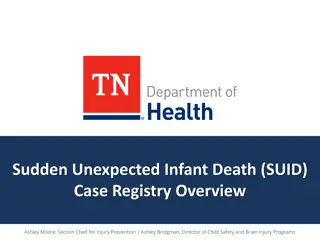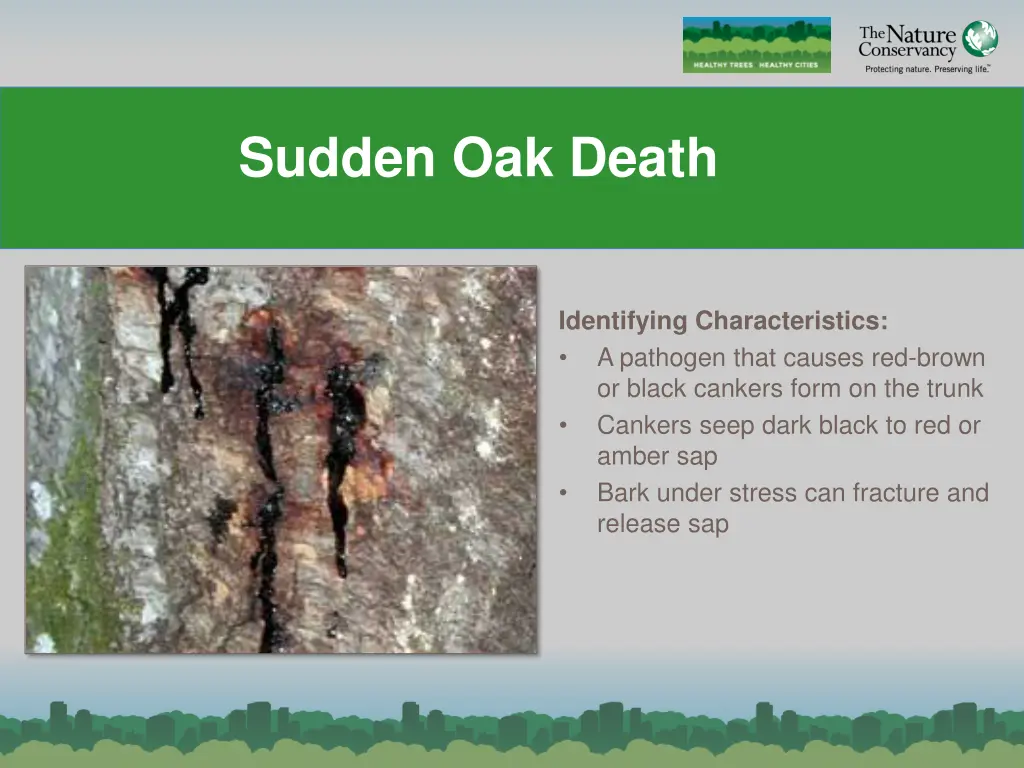
Identifying Characteristics of Sudden Oak Death
Learn about the identifying characteristics, relationship with trees, common host trees, map range, and what to look for in cases of Sudden Oak Death caused by a pathogen resulting in cankers on the trunk, sap seepage, bark fractures, and other symptoms.
Download Presentation

Please find below an Image/Link to download the presentation.
The content on the website is provided AS IS for your information and personal use only. It may not be sold, licensed, or shared on other websites without obtaining consent from the author. If you encounter any issues during the download, it is possible that the publisher has removed the file from their server.
You are allowed to download the files provided on this website for personal or commercial use, subject to the condition that they are used lawfully. All files are the property of their respective owners.
The content on the website is provided AS IS for your information and personal use only. It may not be sold, licensed, or shared on other websites without obtaining consent from the author.
E N D
Presentation Transcript
Sudden Oak Death Identifying Characteristics: A pathogen that causes red-brown or black cankers form on the trunk Cankers seep dark black to red or amber sap Bark under stress can fracture and release sap
Sudden Oak Death Relationship between tree and pathogen Pathogen spores spread through the transportation of infected plants or plant parts such as leaves, twigs and soil These organic materials easily stick to boots, tires, pets, and other equipment that can move the pathogen long distances 2
Sudden Oak Death Common Host Trees Tanoak California black oak Red oak Coast live oak Canyon live oak Shreve Oak Rhododendron Kalmia (Mountain Laurel) Black locust Black cherry Camellia Flowering dogwood Pieris (Andromeda) Sassafras Viburnum Madrone Huckleberry Bay Laurel Red oak Tanoak 3
Sudden Oak Death Map Range of Sudden Oak Death 4
Sudden Oak Death What to Look For 2 1 1. Cankers form on tree 3-6 ft. off the ground 2. A black or reddish ooze often bleeds from the cankers 3. Bark becomes stained 4. Leaves turn brown and fall off prior to autumn Red oak 3 4 5
Sudden Oak Death What to Look For 2 1 1. Cankers form on tree 3-6 ft. off the ground 2. A black or reddish ooze often bleeds from the cankers 3. Bark becomes stained 4. Leaves turn brown and fall off prior to autumn Red oak 3 4 6
Sudden Oak Death What to Look For 2 1 1. Cankers form on tree 3-6 ft. off the ground 2. A black or reddish ooze often bleeds from the cankers 3. Bark becomes stained 4. Leaves turn brown and fall off prior to autumn Red oak 3 4 7
Sudden Oak Death What to Look For 2 1 1. Cankers form on tree 3-6 ft. off the ground 2. A black or reddish ooze often bleeds from the cankers 3. Bark becomes stained 4. Leaves turn brown and fall off prior to autumn Red oak 3 4 8
Sudden Oak Death What to Look For (cont.) SUMMER: Foliage dries up and turns brown SPRING/SUMMER/FALL: Look for symptoms during these seasons as the disease causing pathogen is active during this time 9
Sudden Oak Death Additional Resources USDA http://www.na.fs.fed.us/spfo/pubs/pest_al/sodeast/sodeast.htm Don t Move Firewood http://www.dontmovefirewood.org/gallery-of-pests/sudden-oak-death- syndrome.html EDDMaps: Reporting App for Smartphones http://www.eddmaps.org/ 10




